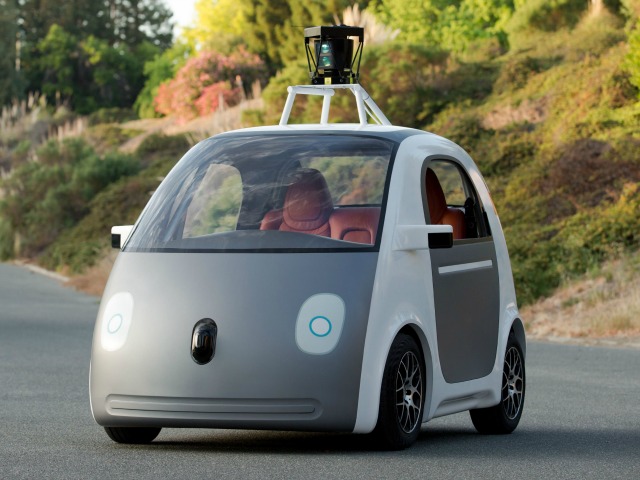The 2014 Los Angeles Auto Show that opened on Friday and runs through November 30 is pushing the concept that self-driving cars are inevitable. Over the next fifteen years Detroit intends to make obsolete all 264 million vehicles in America.
The auto industry calls autonomous vehicles the first major disruptive technology since the advent of the automatic transmission. At the “Connected Car Expo” display at the car and truck show, futurists envision the roll-out of the technology from 2020 to 2030 will radically reshape productivity, transportation, urban planning and work as we know it.
The vehicles of the future will be guided by GPS, radar, sensors, and software to share the road, negotiate obstacles, avoiding collisions with other vehicles or slaughtering pedestrians and to stay in lanes. Google’s driverless cars have logged more than 300,000 miles on California and Nevada highways since 2011.
Chinese carmaker FAW the following year unveiled its autonomous car on public roads. Toyota and Audi exhibited their own versions of the technology at the January 2013 Consumer Electronics Show in Las Vegas. The University of Michigan is building a $6.5 million cityscape on 30 acres of its Ann Arbor campus to test autonomous cars in a simulated urban environment.
Although the auto show folks are talking personal vehicles, what they are really trying to do is prepare the public for commercial trucking as the earliest adopters of autonomous transportation. But the appearance of driverless trucks on congested freeways will pose technical, social, and political hurdles interfacing with “legacy” human operators.
There have been robot vehicles transporting materials in factories for decades, and gigantic Caterpillar 100 ton computer-guided dump trucks already transport ore around mine sites. These closed-loop transportation ecosystems are easy to program and a central controller is usually positioned above to visually maintain control.
The use of autonomous long-haul trucks (ALHTs) could add up billions to company savings throughout the trucking value chain, and in turn, drive down consumer prices. Wal-Mart spends almost a billion dollars each year on the cost of 6,000 trucks constantly transporting wholesale goods from ports and domestic manufacturers directly to individual retail stores. Once reliant on giant warehouses to repackage goods, Wal-Mart has so perfected its logistics that trucks in transit are now considered warehouses.
But one of the challenges Wal-Mart and every other over-the-road transportation company will complain about is the difficulty finding experience drivers with good safety records willing to work mid-night shifts when roads are the least crowded.
Since most truck drivers aspire to be home at night, companies usually have to pay about a 15% premium to recruit night-time drivers. Companies are also more likely to be forced to pay overtime for night-time drivers, since under California law, overtime is calculated on mid-night to mid-night on a daily basis.
Night-time drivers are also at higher risk for heart disease, diabetes, and other conditions. With biology beckoning their bodies to sleep during the night, shift workers say they struggle to stay awake no matter how many years they’ve done it.
Eventually, autonomous commercial and personal vehicles will dominate transportation. Morgan Stanley predicts that widespread adoption this technology would contribute $1.3 trillion to the U.S. economy through cost savings, efficient fuel consumption and lower accidents. Freeing people from driving could add $507 billion in productivity gains.
The Connected Car Expo could also have mention; autonomous vehicles will probably have much better driving habits than teenagers.

COMMENTS
Please let us know if you're having issues with commenting.